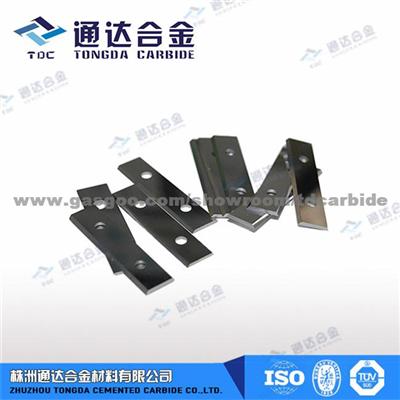Tungsten Carbide Inserts
- Application: all
- Market Type:After Market
- EXW Price: USD 5
- Payment Terms: paypal
- Samples: Free
- Minimum Order: 100Piece/Pieces
Quick Details
- Place of Origin:
Zhuzhou
- Samples:
Free
- Delivery Time:
30
- Max. Production Capacity:
1000000
- Export Ratio:
61% - 70%
- OE Experience:
No
Product Name:Tungsten Carbide Inserts
Tungsten Carbide Inserts
Application
all
Product Description:
Thanks to high precision and high reliability, tungsten carbide inserts have been widely used worldwide for improving productivity. According to different applications, carbide inserts are sorted as wood-cutting tools, clamped inserts, milling & turning inserts, etc.
As we all know that tungsten carbide inserts has at least three cutting parts, and when one of the cutting edge is damaged, users can adjust to another edge for manufacturing, therefore, the carbide inserts are also called tungsten carbide indexable inserts. Tungsten carbide indexable inserts are well known for its durable superiorities, and for finding inserts of long time service life, tungsten carbide indexable inserts become one of the mostly popular inserts among users.
The tungsten carbide inserts Zhuzhou Tongda supplied are improved to meet every new challenge.
Necessary information required for manufacturing tungsten carbide inserts:
1. Specification ( like length x width x thickness)
2. Tungsten carbide grade, or chemical composition
3. surface condition: sintered blank or fine grinding
4. tolerance on dimension ( if you have)
5. If you are not quite clear about which tungsten carbide grade is suitable, please provide us the application of the carbide inserts, and our professional technicians will suggest you a suitable one.
Description of the right tungsten carbide inserts:
1. Specification: 25mm x 5 mm x 3mm ( Length x width x thickness )
2. Surface Condition: Sintered Blank
3. Tungsten Carbide Grade: YG12 (WC + Co:12% + Others: 1%)
4. Properties: density: 14.4g/cm3; T.R.S: 2100 N/mm2; Hardness: 88 HRA
Chinatungsten Online with the state-of-the-art production line and the advanced manufacturing process in the world, the company provides customers with inserts for turning, milling, boring, grooving and threading in finishing, semi-finishing or roughing application.
Tungsten carbide Inserts for Metal Cutting
Tungsten carbide is more expensive per unit than other typical tool materials, and it is more brittle, making it susceptible to chipping and breaking. To offset these problems, the carbide cutting tip itself is often in the form of a small insert for a larger tipped tool whose shank is made of another material, usually carbon tool steel. This gives the benefit of using carbide at the cutting interface without the high cost and brittleness of making the entire tool out of carbide. Most modern face mills use carbide inserts, as well as many lathe tools and endmills. In recent decades, though, solid-carbide endmills have also become more commonly used, wherever the application's characteristics make the pros outweigh the cons.
Mining and tunneling cutting tools are most often fitted with cemented carbide tips, the so-called "Button Bits". Only man-made diamond can replace the cemented carbide buttons when conditions are ideal, but as rock drilling is a tough job the cemented carbide button bits remain the most used type throughout the world.
Supplier Details
You May Like:
-
Solid Tungsten Carbide Rods
Application: all
-
Tungsten Carbide Indexable Inserts WNMG
Application: all
-
Tungsten Carbide Indexable Inserts YBC151
Application: all
-
Sealing ring / TATRA / 341-608400 / 442050910434
Application: TATRA
OEM No: 341-608 ...
-
GWM Parts OIL INLET PIPE CLAMP-POWER STEERING GEAR ...
Application: Wingle
OEM No: 3406017 ...
-
RENAULT Truck Steering Box Lever 5001846488
Application: VOLVO RENAULT Se ...
OEM No: 5001846 ...
-
Steel Round Bar 5. 5-42mm Stainless Steel Material
Application: Beiqi
-
Stop Block
Application: SGMW
-
Aluminum Sheet For Pilfer Proof Cap ROPP 3105 8011
Application: audi, BMW, BYD, ...
Related Product Tags:
aluminium shot , aluminum block , mower aluminum block , mower aluminum block for toyota , aluminum foil , aluminum foil tape , aluminum profile , aluminum profiles , Aluminum Wire , bending part , bending parts , brass fitting , brass fitting valve , brass fittings , brass joint , cast steel grit , chain link fence , co2 welding wirePlease send us Your Search Requirement, or you can Post a Buying Lead,
suppliers may contact you actively.









